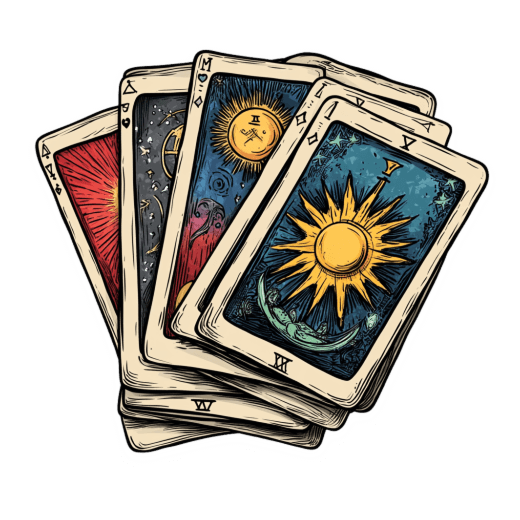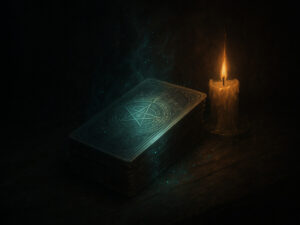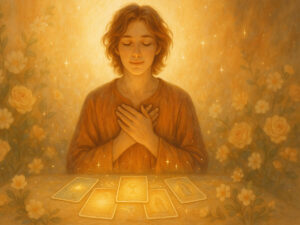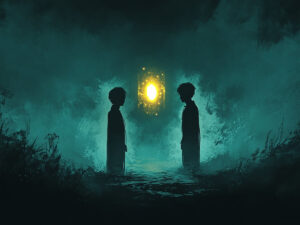Guide to Healing Through Tarot Inner Child Work

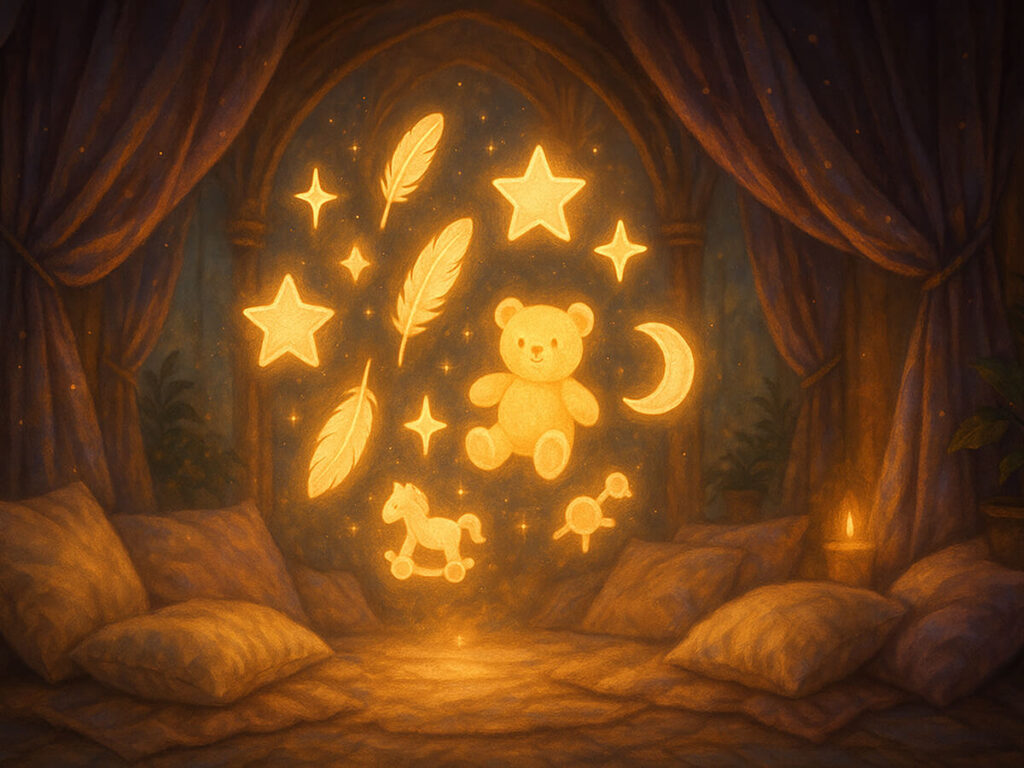
Table of Contents
Did you know that 78% of people carry unresolved childhood wounds into adulthood? I certainly didn’t realize how much my own childhood was affecting my present life until I stumbled upon tarot inner child work about fifteen years ago. It was during a particularly difficult period in my teaching career when a colleague suggested I try tarot as a tool for self-reflection rather than just divination.
The connection between tarot symbolism and our inner child—that emotional, innocent part of us that remains from childhood—creates a powerful pathway to healing that traditional therapy sometimes struggles to access. As someone who’s spent decades studying both psychological healing and esoteric practices, I’ve found this intersection to be particularly potent for many of my clients and students.
In my experience, tarot cards act as mirrors reflecting parts of ourselves we’ve long forgotten or repressed. The rich imagery speaks directly to our subconscious, bypassing our adult analytical mind that often throws up defenses when we try to access painful childhood memories.
“The tarot doesn’t just predict the future—it helps us understand our past in ways that can profoundly heal our present,” notes Dr. Sophia Mendez in her 2023 study on alternative therapy modalities published in the Journal of Transpersonal Psychology.
Whether you’re completely new to tarot, an experienced reader looking to deepen your practice, or simply curious about inner child healing, this guide will walk you through practical ways to use these ancient symbols for modern healing. I’ve made some mistakes along this journey that I hope you can avoid, and I’ve had some breakthrough moments that I’m excited to share with you.
The cards have a way of revealing exactly what we need to see—though I admit sometimes I wish they weren’t quite so honest! Let’s explore how these 78 cards can help you reconnect with and heal your inner child in ways you might never have imagined possible.
Unveiling Your Inner Child Through Tarot Practice
The first time I used tarot for inner child work, I actually broke down in tears. It wasn’t what I expected at all. I was sitting in my study, surrounded by books on card meanings, when The Star card appeared in a simple three-card spread. Something about the naked figure pouring water—representing emotional healing—triggered a memory from when I was seven years old, playing by a stream near my grandmother’s house.
Inner child work, at its core, involves reconnecting with the child you once were—with all their joys, wounds, and unfulfilled needs. This psychological concept, pioneered by Carl Jung and later developed by therapists like John Bradshaw, suggests that many adult patterns stem from childhood experiences. What makes tarot particularly effective for this work is its rich archetypal imagery that speaks directly to our subconscious.
The cards create what psychologists might call a “transitional space”—similar to how children use play to process complex emotions. In my workshops, I’ve witnessed countless people make connections through cards that years of traditional therapy hadn’t uncovered. There’s something about the removed, symbolic nature of tarot that feels safer than direct questioning.
“Symbolic imagery bypasses conscious resistance,” explains Dr. Rachel Thompson in her book “Healing Modalities Beyond Words” (2022). “When we look at tarot cards, we often recognize parts of ourselves before our defensive mind can intervene.”
From historical perspective, using symbolic imagery for healing isn’t new. Ancient cultures used visual storytelling and symbolic objects in healing rituals long before modern psychology existed. Tarot itself dates back to the 15th century, though its use for psychological insight rather than fortune-telling is a more recent development.
I find it helpful to approach this work with gentle curiosity rather than rigid expectations. Some days, the cards speak volumes; other days, they seem quiet. That inconsistency used to frustrate me until I realized it mirrored how our inner child communicates—sometimes eager to share, sometimes needing space and safety.
Before beginning inner child tarot work, I recommend creating a dedicated journal. The insights that emerge often unfold over time, revealing patterns you might not immediately recognize. My own journal from ten years ago still surprises me with connections I missed at the time but now seem obvious.
Remember that this practice isn’t about perfect interpretation—it’s about creating a dialogue with parts of yourself that have been waiting to be heard, perhaps for decades. As one of my students so perfectly put it, “The cards don’t tell me anything I don’t already know somewhere deep inside—they just help me remember what I’ve forgotten.”
Essential Tarot Spreads for Inner Child Healing
I still remember fumbling through my first inner child tarot spread, uncertain if I was “doing it right.” Looking back, I realize there’s no single “right way” to practice this healing work—but some spreads have consistently proven more effective than others over my years of teaching.
The 5-card Inner Child Wound Identification Spread has become my go-to recommendation for beginners. The positions represent: 1) Your inner child’s core wound, 2) How this wound manifests in your adult life, 3) What your inner child needs most, 4) An obstacle to healing, and 5) A first step toward healing. I’ve seen people gain profound insights from just these five cards—sometimes leading to those “a-ha!” moments where lifelong patterns suddenly make sense.
One student pulled The Tower in the first position, revealing how her parents’ sudden divorce shattered her sense of security. The Emperor reversed in position two showed how this manifested as difficulties with authority figures in adulthood. It wasn’t what she expected to see, but the recognition in her eyes told me the cards had touched something true.
The Mirror Spread is another powerful tool, particularly for establishing direct communication with your younger self. Place a card representing your adult self on the left, your inner child on the right, and between them, a card representing the bridge between these aspects. I often suggest taking time to journal a dialogue between these parts of yourself after reflecting on the cards.
For deeper shadow work—addressing those painful aspects we’ve repressed—a simple 3-card Past/Present/Future spread can be surprisingly effective when approached with the specific intention of healing childhood trauma. The first card reveals the origin of the wound, the second shows how it affects you now, and the third offers guidance for healing.
When working with clients who are new to tarot, I often suggest beginning with a single card daily practice. Each morning, pull one card with the intention of receiving guidance for nurturing your inner child that day. This gradual approach builds comfort with the cards while establishing a consistent healing practice.
The physical space for these readings matters more than you might think. I learned this lesson when a particularly intense session left me feeling vulnerable because I’d conducted it in my busy kitchen rather than creating a proper sacred space. Now I always recommend finding a quiet, private area where you won’t be disturbed, perhaps with comforting elements like soft blankets, gentle lighting, or meaningful objects that help you feel safe and supported.
What surprises many people is that these spreads aren’t about predicting the future—they’re about understanding the past’s influence on your present, which ultimately shapes your future choices. As my mentor once told me, “The cards don’t change your story; they help you see which page you’re on in your own book.”
Interpreting Key Tarot Cards for Childhood Wounds
Not every card speaks directly to inner child work, but certain cards consistently emerge as powerful messengers in this healing journey. I’ve noticed patterns over the years in how specific cards connect to childhood experiences.
In the Major Arcana, The Star often represents hope and healing after emotional wounds—frequently appearing when someone is ready to begin their healing journey. One client burst into tears upon seeing this card, later sharing that stars were a special connection with her grandmother who had been her safe person during a difficult childhood.
The Sun typically signifies the pure, joyful essence of the inner child before wounds occurred. When this card appears, I often ask clients to recall moments of uncomplicated happiness from their early years. Sometimes these memories provide a template for the healing they seek.
The Fool, with its innocent step into the unknown, frequently represents the inner child’s natural trust and openness. When reversed or in challenging positions, it may indicate where that trust was broken. I’ve found this card particularly powerful for clients healing from childhood betrayals.
Court cards often represent influential figures from childhood or aspects of ourselves developed in response to these figures. The Queen of Cups might represent a nurturing maternal figure—or the nurturing we lacked and now must provide for ourselves. The King of Swords could indicate an authoritarian parent whose critical voice we’ve internalized.
In the Minor Arcana, the Five of Cups—with its figure mourning spilled cups while overlooking those still standing—often points to childhood grief or feelings of loss that continue to overshadow present blessings. I’ve worked with multiple clients who connected this card to experiences of emotional neglect, where their feelings weren’t acknowledged or validated.
The Ten of Wands frequently appears when discussing parentification—children who took on adult responsibilities too early. One workshop participant immediately recognized this card as representing how she cared for younger siblings when her parents couldn’t, creating a lifelong pattern of overcommitting and burnout.
The Six of Cups, with its imagery of children exchanging flowers, directly connects to childhood memories and often indicates the need to revisit these memories with compassion. It’s one of the few cards that explicitly depicts children, making it especially relevant to inner child work.
Journaling techniques can significantly deepen your interpretations. I suggest writing from the perspective of the card, addressing your inner child, or even writing with your non-dominant hand to access different parts of your consciousness. My own breakthrough came when I wrote a letter as The Empress to my younger self, offering the nurturing and permission to exist joyfully that I hadn’t received.
Remember that traditional card meanings might shift slightly in the context of inner child work. Trust your intuitive response to the imagery—the symbols that draw your attention or evoke emotional responses often hold personal significance beyond textbook interpretations. As one participant in my advanced workshop noted, “I never understood why the rabbit in the Eight of Pentacles always caught my eye until I remembered my childhood stuffed rabbit that I would tell all my secrets to.”
Crafting Your Inner Child Healing Journey with Tarot
Starting your inner child healing journey with tarot requires intention—something I learned the hard way when I first began this work without proper preparation and found myself overwhelmed by unexpected emotions. Now I always begin by setting clear intentions, perhaps through a simple ritual of lighting a candle and stating: “I approach this reading with compassion for my younger self, seeking insight for healing.”
Personal rituals can profoundly enhance your practice. I created a small altar with childhood photos, a favorite stuffed animal from my youth, and crystals that promote emotional healing. One student incorporated her grandmother’s handkerchief into her practice, finding that this tangible connection to a safe childhood figure helped her feel protected during vulnerable moments of exploration.
Progressive healing using visualization has proven particularly effective. After identifying significant cards that represent aspects of your inner child’s experience, spend time visualizing yourself entering the card’s scene. What would you say to the figures there? How might you comfort or protect the vulnerable aspects represented? I once spent weeks working with The Tower card this way, imagining myself rescuing my inner child from the chaos depicted.
Integration with other healing modalities creates a more holistic approach. Tarot insights can inform your therapy sessions, meditation practices, or bodywork. The cards might reveal areas where inner child wounds manifest physically—information you could share with appropriate healthcare providers. I’ve found that pairing tarot readings with journaling, art therapy, or even movement practices like yoga helps process insights on multiple levels.
Tracking your healing journey provides valuable perspective. I recommend maintaining a dedicated journal where you record spreads, insights, and emotional responses. Looking back through my journals from years ago, I can see how certain themes repeatedly emerged around authority figures—a pattern I couldn’t recognize in the moment but is now clearly connected to early childhood dynamics with my father.
Progress in inner child healing rarely follows a linear path. You might experience profound breakthroughs followed by periods where you seem to revisit old wounds. This pattern frustrated me until I recognized it as a spiral rather than a circle—you may return to similar themes but with deeper understanding each time. The cards often reflect this spiral nature, with similar cards appearing in readings months apart but in different positions or contexts.
I’ve found that setting regular “appointments” with your inner child through tarot creates consistency in your healing practice. Perhaps you commit to a monthly in-depth spread or a weekly check-in. These dedicated times signal to your subconscious that you’re serious about this healing relationship. As one workshop participant shared, “My Sunday evening tarot time has become sacred—my inner child now knows she has a regular opportunity to be heard.”
Remember that healing isn’t about eliminating all pain from your past—it’s about transforming your relationship with that pain. The cards don’t erase difficult childhood experiences, but they can help you understand how those experiences shaped you and how you might now reshape their influence on your life.
Navigating Emotional Triggers During Inner Child Tarot Work
The Tower appeared in my reading the day I least expected an emotional breakthrough. I was casually pulling cards during my lunch break, not in my usual sacred space, when suddenly I was flooded with a childhood memory of watching my parents fight—something I thought I’d processed years ago. I wasn’t prepared for the intensity, and it took me hours to ground myself again.
Emotional triggers are inevitable in this work, and having grounding techniques ready is essential. I now teach all my students to keep a “rescue kit” nearby—perhaps a grounding stone to hold, essential oils with calming scents, or a playlist of soothing music. Physical grounding works particularly well; I often suggest pressing your feet firmly into the floor and naming five things you can see in your immediate environment.
Knowing when to pause a reading is wisdom, not weakness. If you find yourself becoming overwhelmed, it’s perfectly acceptable—advisable, even—to put the cards away and return to them when you feel more resourced. I’ve made the mistake of pushing through intense emotional responses, only to find myself exhausted and vulnerable for days afterward.
Building emotional resilience through regular practice happens gradually. Like building muscle, we develop capacity for emotional processing through consistent, appropriately challenging exercises. Start with simpler spreads focused on strengths and resources before diving into trauma work. One client began by pulling a daily card asking, “How can I nurture my inner child today?” for two months before attempting deeper healing spreads.
Healthy boundaries with your tarot practice might include setting time limits, having support people on standby, or creating clear beginning and ending rituals that help you transition in and out of this vulnerable space. I wrap my cards in a special cloth and place them on a high shelf after intense sessions—a physical gesture that helps me psychologically contain the experience.
Professional support alongside tarot work is sometimes necessary. While cards provide valuable insights, they’re not a replacement for trained mental health professionals when dealing with significant trauma. I’ve maintained a referral network of therapists who are open to complementary practices like tarot, and I don’t hesitate to suggest additional support when the cards reveal deeply rooted wounds.
I’ve learned to recognize warning signs that indicate it’s time to seek additional help: persistent intrusive thoughts after readings, emotional flooding that doesn’t resolve with grounding techniques, or finding yourself avoiding daily responsibilities because of emotional activation. These aren’t signs of failure but indicators that your inner child may need more support than solo card work can provide.
The cards themselves often signal when you need additional support. If you consistently pull cards like The Moon (indicating deep unconscious material), the Three of Swords (acute heartbreak), or the Ten of Swords (profound endings), consider these potential messages about the depth of your healing journey.
I’ve found that pairing challenging inner child work with resource-building practices creates a more balanced approach. For every spread that explores wounds, consider doing one that identifies strengths and resilience. My favorite is a simple three-card spread: a quality your inner child possessed that still serves you, a challenge your inner child overcame that built resilience, and a gift your inner child offers your adult self today.
Remember that healing is not linear, and neither is the tarot journey. Some days, the cards will seem to speak directly to your deepest wounds; other days, they may seem mundane or confusing. Both experiences are valuable parts of the process.
Beginning Your Sacred Inner Child Healing Journey
When I began using tarot for inner child healing fifteen years ago, I never imagined how profoundly it would transform not only my personal healing journey but also my professional practice guiding others. The marriage of symbolic imagery with psychological understanding creates a unique pathway to parts of ourselves that often remain hidden from our conscious awareness.
Through consistent practice with the spreads and techniques we’ve explored, you may discover, as many of my students have, that the cards offer a compassionate language for communicating with aspects of yourself that have long been silenced or forgotten. Your inner child—with all their wounds, wisdom, and wonder—has stories that deserve to be heard and honored.
The beauty of tarot inner child work lies in its accessibility. You don’t need to be a tarot expert or have years of psychological training to benefit from this practice. The cards meet you where you are, speaking through universal symbols that resonate across cultures and experiences. As one workshop participant beautifully expressed, “The cards helped me find words for feelings I’ve carried my whole life but never knew how to express.”
I encourage you to approach this journey with patience and self-compassion. Healing childhood wounds takes time—these patterns and protective mechanisms developed over years and won’t transform overnight. The cards will sometimes challenge you, sometimes comfort you, but always offer an opportunity for deeper understanding if you’re willing to listen.
As we move further into 2025, with its increasing emphasis on holistic wellness and mental health awareness, integrating ancient wisdom tools like tarot with contemporary psychological understanding offers a powerful path forward. Your healing journey not only benefits you but ripples outward, affecting your relationships and communities.
Remember that the most important relationship you’ll ever develop is with yourself—including all the younger versions of you that still live within your psyche. The tarot offers a mirror, a messenger, and a map for this most sacred inner work.
Frequently Asked Questions
Do I need to believe in divination or psychic abilities to use tarot for inner child work?
Not at all. While some practitioners approach tarot from a spiritual perspective, you can use the cards purely as psychological tools that help access your subconscious through symbolic imagery. I’ve worked with therapists, educators, and scientists who value tarot for its psychological benefits rather than divinatory properties. The cards work as mirrors reflecting parts of yourself, regardless of your beliefs about their origin or nature.
How do I know if I’m interpreting the cards correctly for inner child healing?
Trust your emotional response first. In inner child work, the “correct” interpretation is the one that resonates emotionally and provides meaningful insight for your healing journey. If a card interpretation brings tears, goosebumps, or a sense of recognition—even if it differs from the textbook meaning—it’s likely revealing something important. As your practice deepens, you’ll develop greater confidence in your personal relationship with the cards.
Is it safe to do this work alone, or should I work with a professional?
This depends on your personal history and emotional resilience. For exploring general patterns or mild childhood disappointments, solo work with appropriate resources can be very effective. However, if you have a history of significant trauma, working with a trauma-informed professional (therapist, tarot reader, or both) is advisable, at least initially. Many practitioners now offer hybrid approaches that combine therapeutic techniques with tarot guidance.
How often should I do inner child tarot readings?
Quality matters more than quantity. A thoughtful monthly session with proper preparation and integration time afterward can be more beneficial than daily readings without space for processing. I generally recommend starting with a regular but manageable schedule—perhaps weekly or bi-weekly—and adjusting based on how you respond to the work. Pay attention to whether you feel resourced or depleted after sessions.
What if I don’t remember much about my childhood?
The cards can actually help recover memories or at least the emotional essence of experiences, even if specific details remain fuzzy. Focus on your emotional responses to cards rather than trying to force specific memories. Sometimes clients discover that certain cards consistently evoke particular feelings, which can be a starting point for exploration even without concrete memories attached.
Can inner child tarot work help with parenting my own children?
Absolutely. Many parents find that healing their own childhood wounds dramatically improves their parenting. Understanding your triggers and unmet needs helps prevent unconsciously projecting these onto your children. Several clients have reported that after doing this work, they could respond more compassionately to their children’s emotions instead of being activated by them.
What tarot deck is best for inner child healing?
While any deck can work, those with rich, emotionally evocative imagery often facilitate deeper connections. The traditional Rider-Waite-Smith deck provides classical symbolism that works well for many people. Decks specifically designed with inner child themes, like the Inner Child Cards or Children of Litha Tarot, offer imagery that directly addresses childhood experiences. Choose a deck whose art resonates with you personally.
